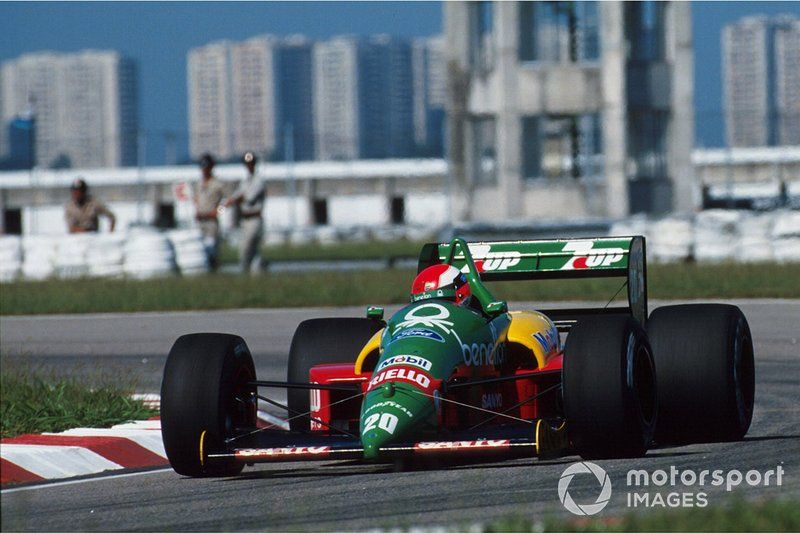While its super small sidepod inlets, and eye-opening undercut, are the most visually grabbing elements, there is a lot of detailed work that has gone into bringing the entire package together to deliver the required cooling and aero needs.
This has meant a lot of work in optimising the efficiency of the RB20 throughout the early stages of the season, with an interesting update arriving for the Japanese Grand Prix that has more to it than first meets the eye.
Obviously, attention was immediately drawn to the arrival of a new intake alongside the rear leg of the halo (inset, left).
While the Red Bull version is small, it did bring back a few memories of what Benetton did in 1988 and the first half of 1989 with its B188.
Johnny Herbert, Benetton B188
Photo by: Mark Sutton / Motorsport Images
Whilst the RB20 intakes do seem a little out of the ordinary in the context of where we are used to seeing teams place them, the overall inlet scheme employed by Red Bull in 2024 is significantly different to anything else on the grid.
As Giorgio Piola‘s drawing shows, we have the intakes sandwiched between the rear leg of the halo and the edge of the cockpit in this region. They feed cool air to a smaller cooler that is mounted side saddle beside the power unit.
And, whilst the new intake undoubtedly assists the inboard cooler, it appears that these new intakes might play more of a role in helping to move the internal flow through the engine cover and sidepod bodywork.
This also makes sense, given that the sidepod’s upper, horizontal inlet and the forward bodywork have been reconfigured, with the inlet made slightly smaller than the specification used in the first three races of the season (new arrangement, upper right inset).
Meanwhile, another vertical flow diverter was added midway across the span of the wing mirror slat (black arrow, inset) to help manage flow over the upper surface of the sidepod, including where the new intake resides.
Red Bull has also once again shown the versatility of the upper cooling arrangement, as the outlet on the side of the engine cover’s bulge was blanked off, just as it was in Saudi Arabia, whilst the louvred panel within the gulley above was opened.
The segmentation of the various sidepod and engine cover panels allows for a great deal of modularity, resulting in the team being able to be very selective at each race.
This means that what we see in Japan might be reconfigured again going…
Click Here to Read the Full Original Article at Autosport.com – Formula 1 – Stories…

